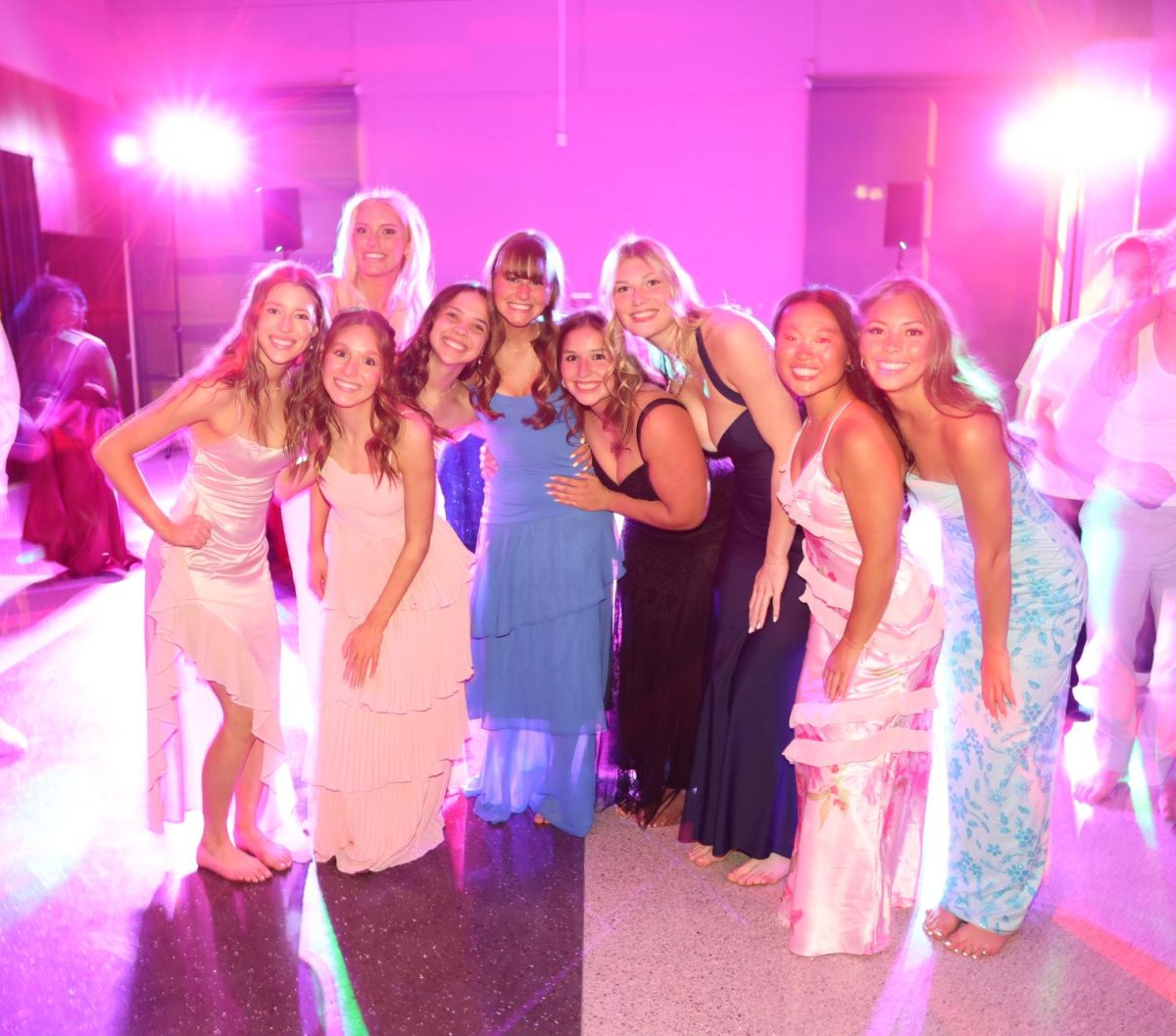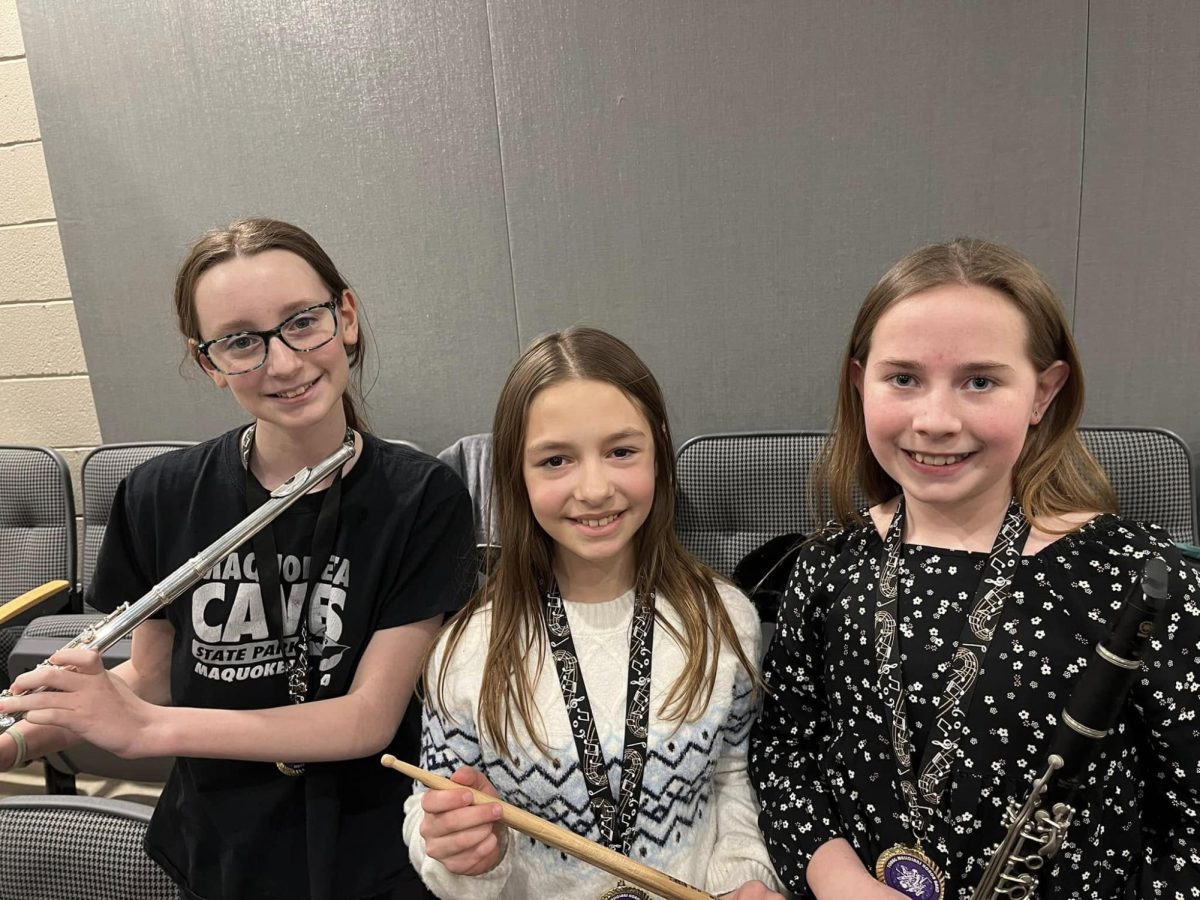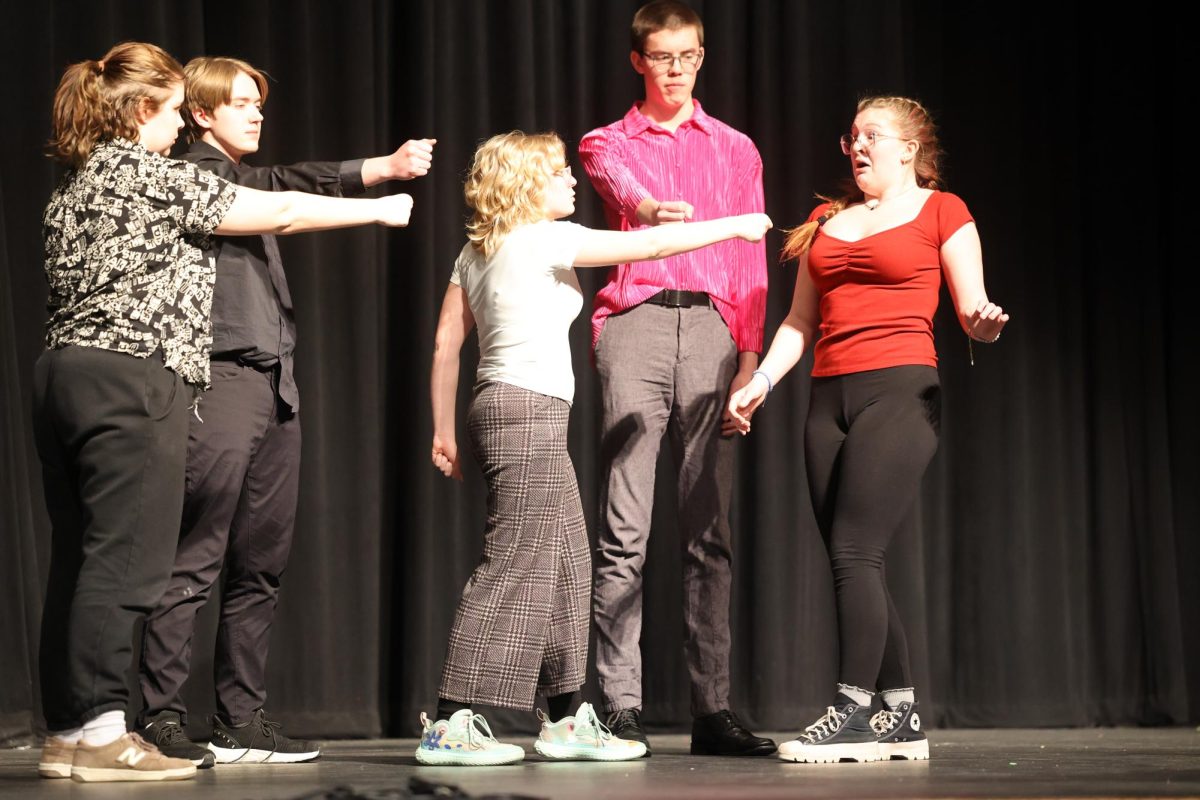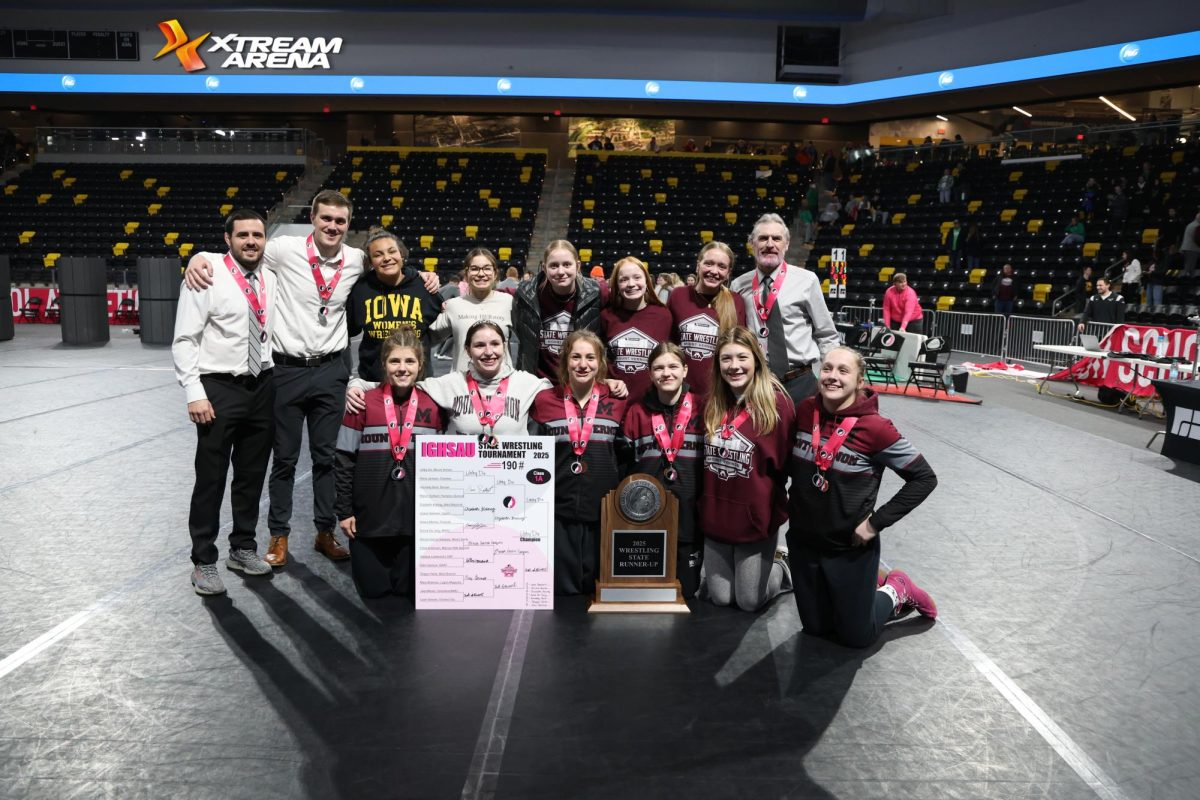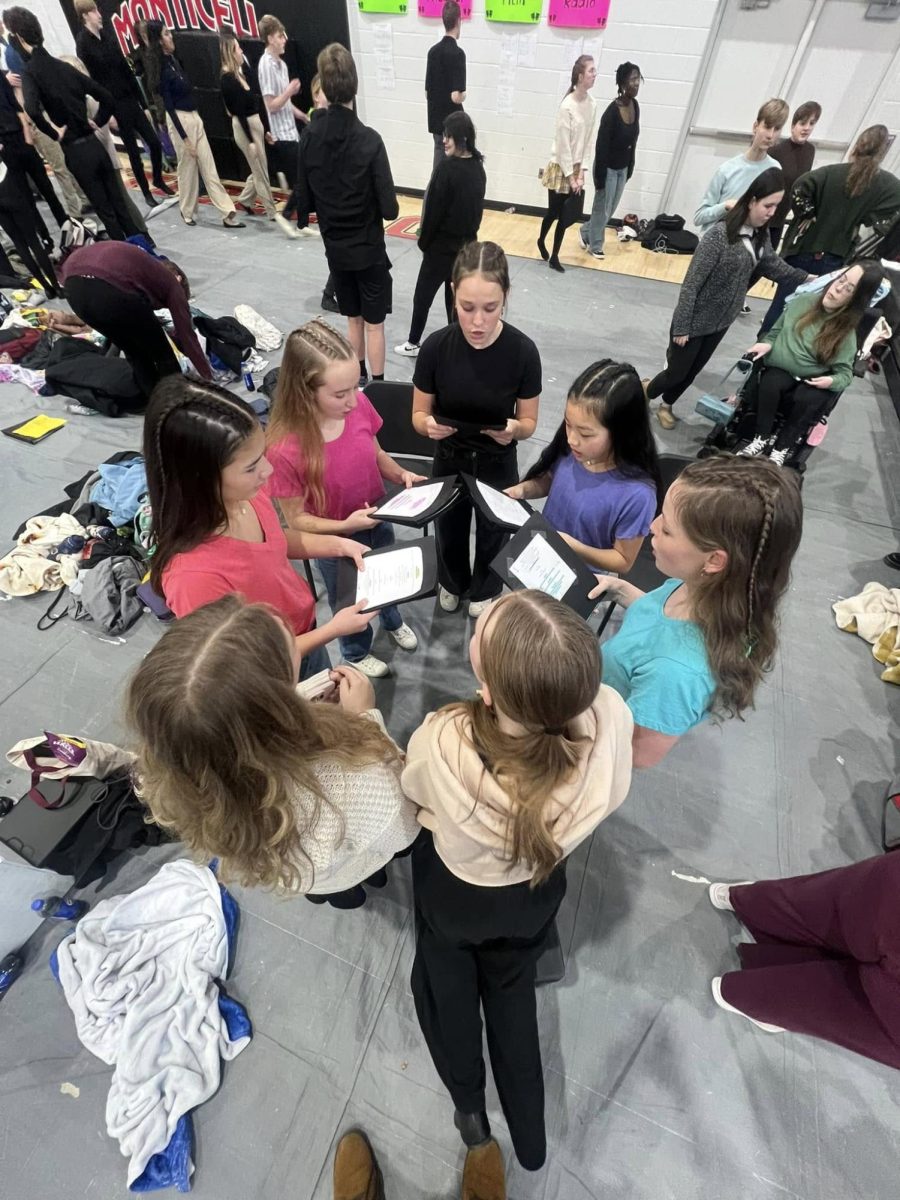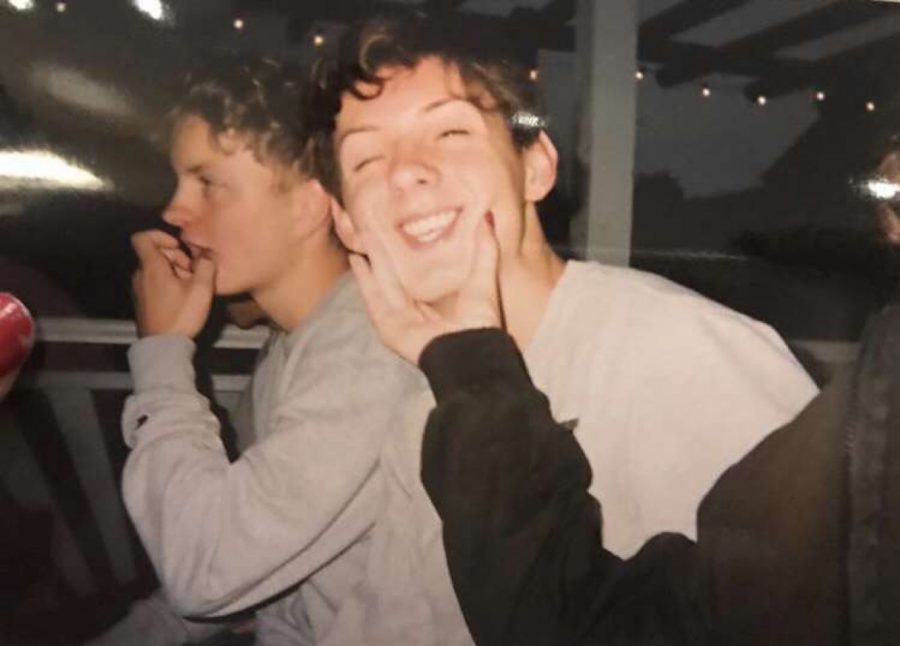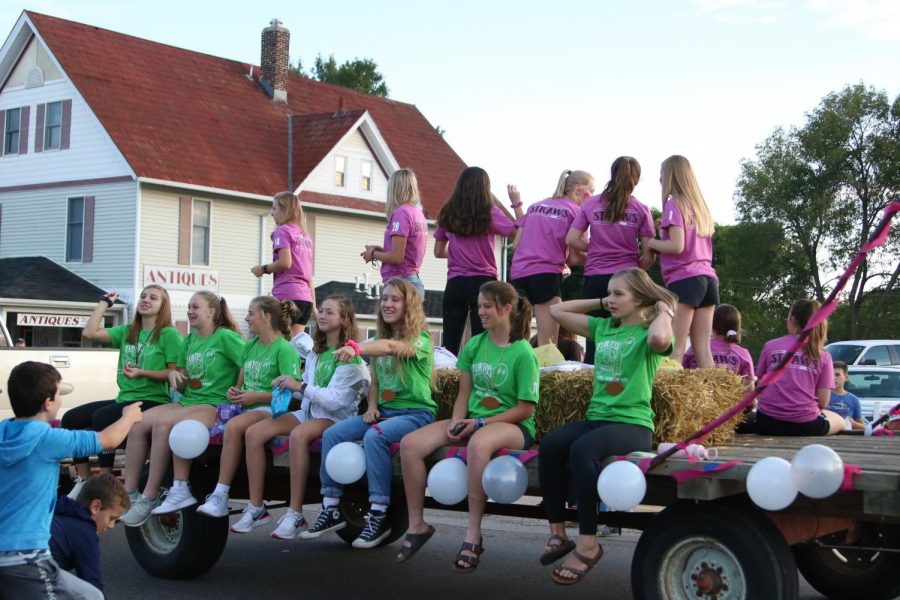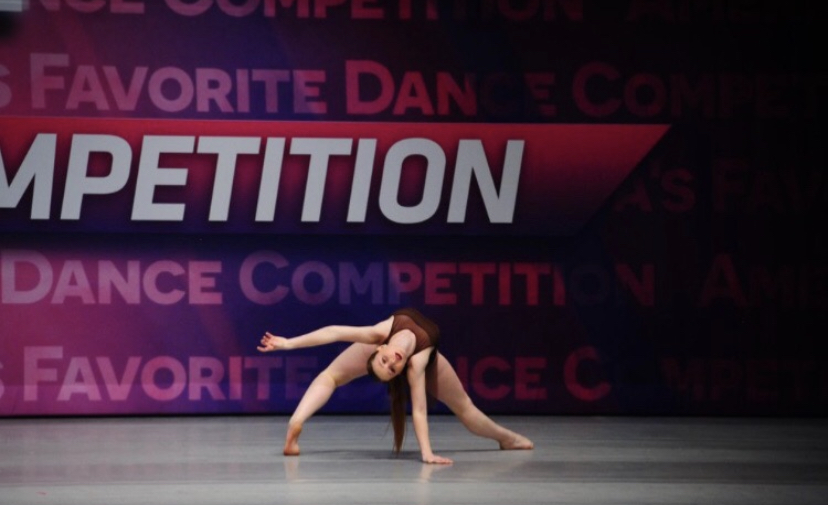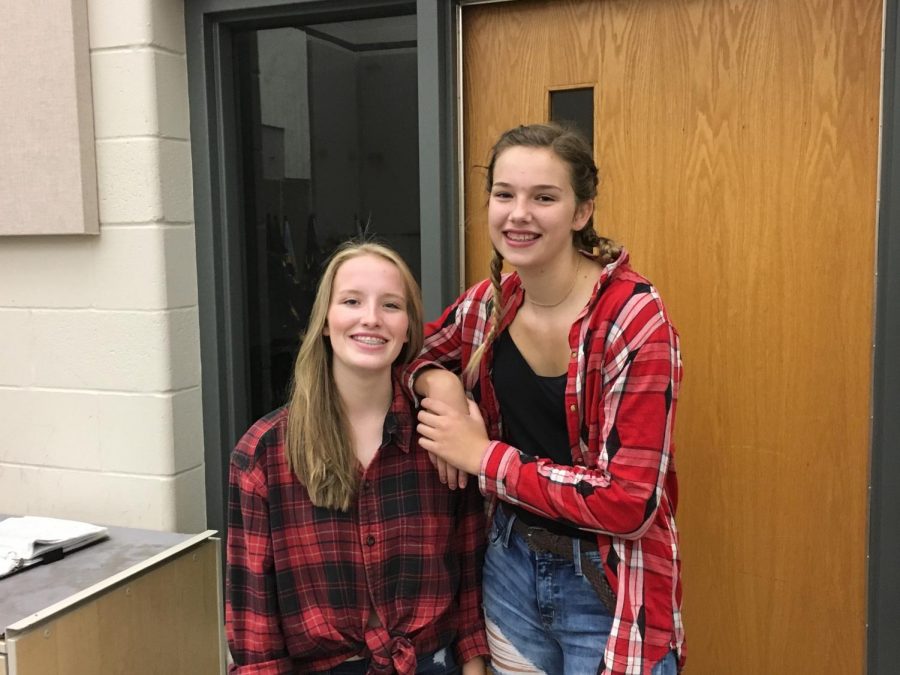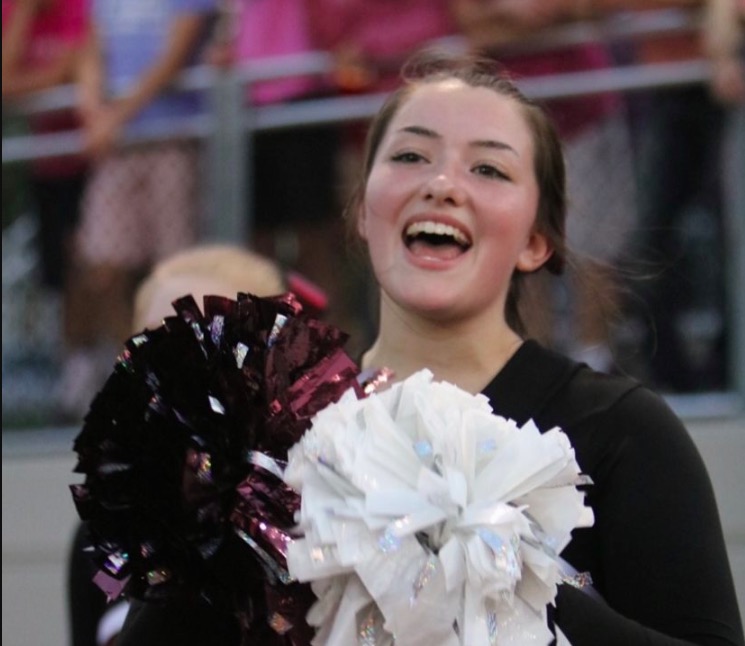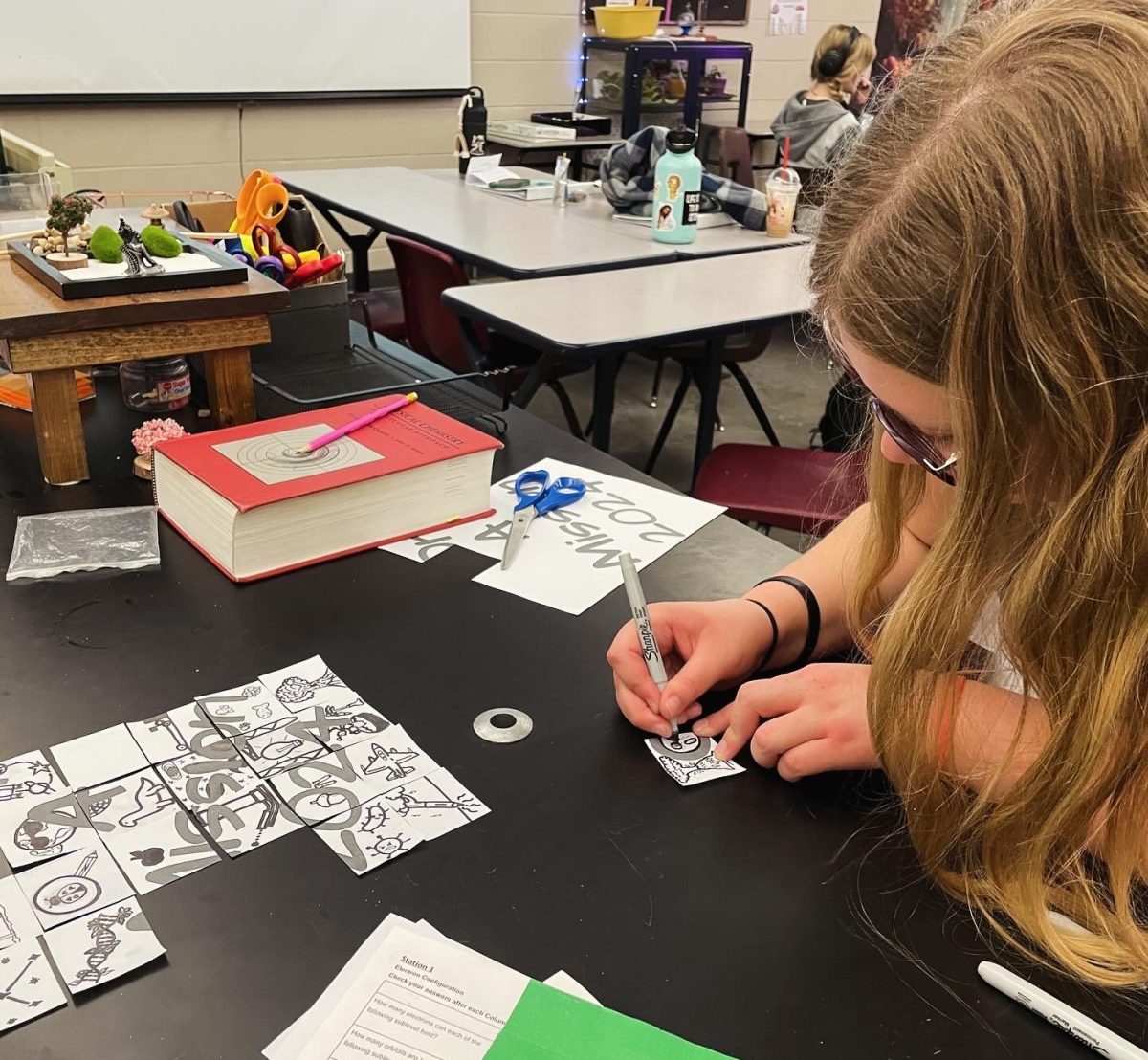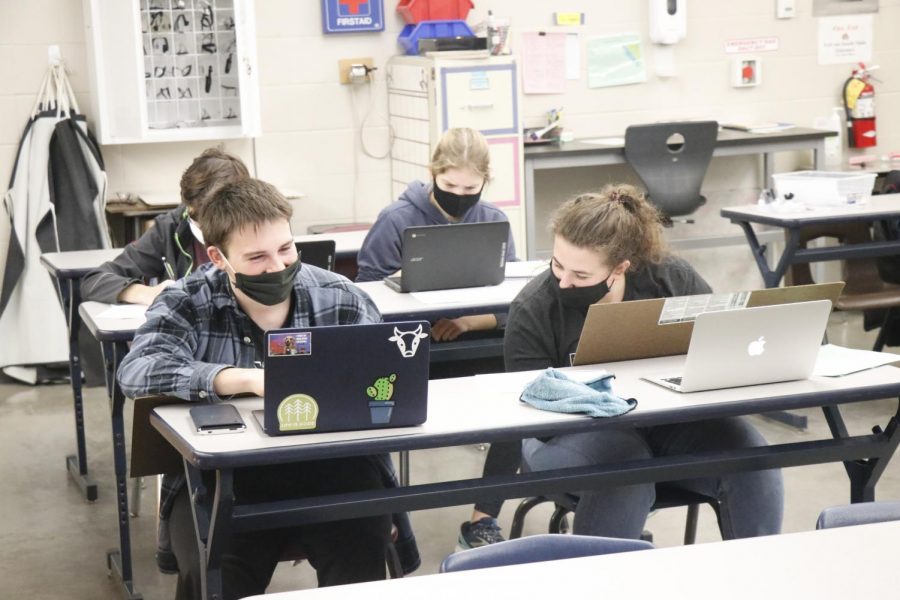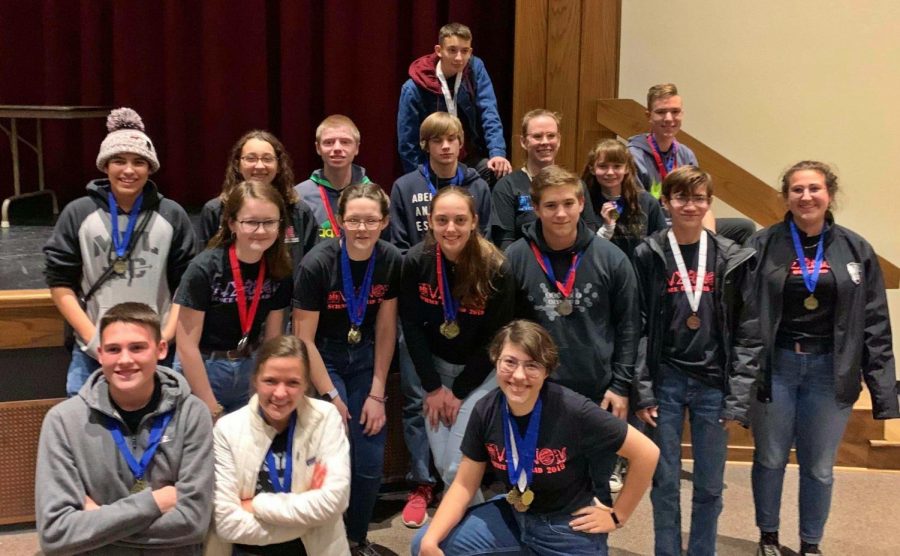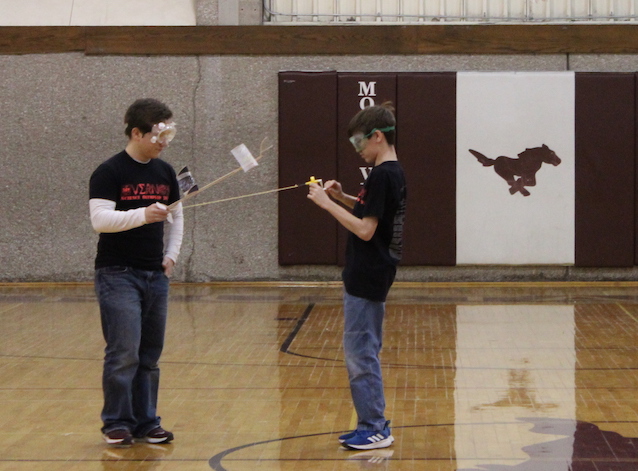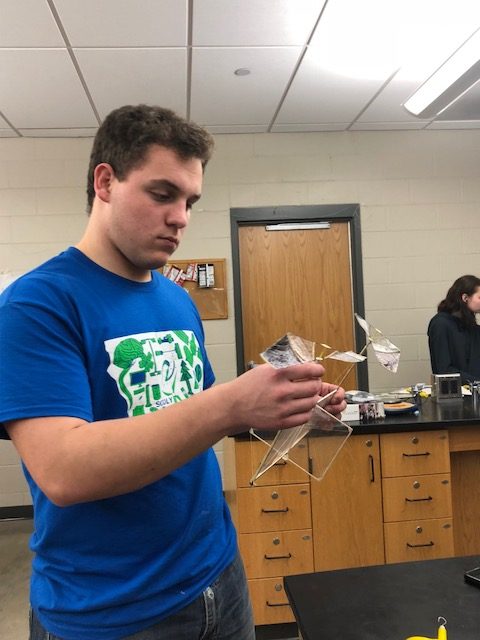TEAM ADVANCES TO STATE COMPETITION AT COE COLLEGE SATURDAY
by Renny Klein
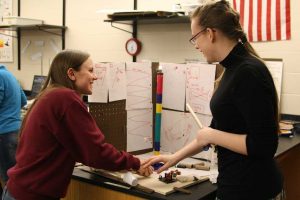
The High School Science Olympiad Team has officially kicked off its first ever season this year by competing in its first tournament, at Truman University on Feb 22. Mount Vernon has had a middle school team for quite some time, but this is the debut of the high school team. Overall, Mount Vernon placed fourth in the Missouri State Tournament, with various events earning first, such as Entomology and Elastic Launch.
Science Olympiad is an American elementary, middle, and high school competition where students compete in events that focus on various studies of the sciences, such as biology, engineering, chemistry, and environmental science. There are 23 events for Division C, which is the high school division. Each student has from two to four events that they compete in at tournaments. Each event has two to three students who are partnered-up to work together in becoming experts in their event. “If you don’t have friends, you can do Science Olympiad because we’re all awkward so it’s ok!” jokes participant Kate Baumler, a junior.
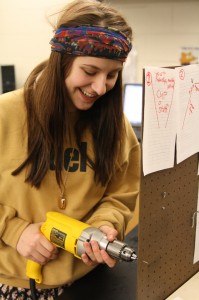
The coach of the high school team, science teacher Alaina Appley, has always wanted to start a Science Olympiad team in the schools she has taught in the past, but said, “It’s hard to start from scratch, but having the middle school team and Mr. Hanson helped to start one here.” Mrs. Appley’s view of the competition at Truman was , “overall it went well; it was especially a good motivator. I was really proud of a few groups.” Mrs. Appley was especially proud of the Entomology group, for their score was double that of Missouri’s top score.
The team also learned more about the rules for each event. For example, in Elastic Launch, there was a violation in the fact that the glider wasn’t labeled with the school. In the event of Elastic Launch, teams build a glider, airplane, or other flying craft, and launch it; the longest time wins. Out of all of the events, Mrs. Appley’s favorites to help with are Chem Lab, which is all about the workings of chemistry, and Mission Possible, which deals with engineering a Rube-Goldberg Machine to perform a certain task. A Rube-Goldberg Machine is a purposely over complicated contraption that normally uses a large chain reaction to carry out a task. Her last favorite event to help with is Designer Genes which is all about the study of genetics.
Practices for Science Olympiad are often unscheduled- most students show up whenever they have free time to spend anywhere from an hour to three hours working on their event. However, every few weeks there are scheduled night practices which usually run from 4 – 8 p.m. Practices are very independent- students choose which event to work on, when to work on them, and how they should practice. Haley Smith, a junior participant, said, “My favorite part of practice is the tea and chocolate.” Indeed, during the first month or so of Science Olympiad, a tea and hot chocolate stash was stockpiled in the room. Since the consumption of tea in the room has risen so much, Mrs. Appley has senior Kaiser Arndt making distilled water to use in the kettle. Tea parties are also Mrs. Appley’s favorite part of the practices, because “It’s a good way to get to know the students.”
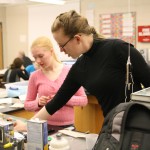
For some events, students meet with coaches. A lot of times coaches are professors or students from Cornell College, teachers from Mount Vernon, or various people that are known for being experts in a certain topic. This year, the high school team will have about 12 students from Cornell College help mentor students in events including Designer Genes, Water Quality, Chem Lab, and Entomology. Most of the students that volunteer to help out with Science Olympiad are students majoring in Chemistry, Biology, and the Environmental Sciences.
Science Olympiad participants as well as Mrs. Appley were excited to have the first practice with the college mentors March 4. Three mentors joined the practice to help with events such as Water Quality, Designer Genes, Anatomy & Physiology, and Disease Detectives. The mentors, Julie, Thao, and Brianna, helped students research their topics and provide more information based on what they have learned in their Cornell classes. Most of the students that came to help are majoring in Bio Chemistry.
Actual competitions are a very unique experience. Students are rushing to events, carrying various tools such as hydrometers, goggles, gliders, and boomilevers. The waiting areas are filled with students doing last minute checks to make sure their projects and notes are agreeable with regulations. At the competition at Truman, a team could be observed testing their Bungee Drop from the top of some stairs. Bungee Drop is an event where a team uses a specific type of elastic cord to drop a given mass from a given height, and try to get it as close to the ground without touching as possible.
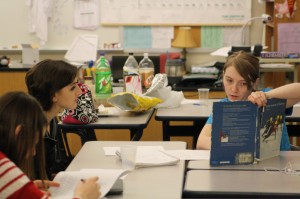
When students aren’t busy with their events, since some students’ events are scheduled throughout the day rather than all at once, most lounge in the waiting area, socialize with other teams, or simply do whatever they can to pass the time. Haley’s favorite things about competitions are, “meeting new people, and taking the tests, especially when the test is easy because you know all of the answers, that’s always a great feeling.”
Kate said her favorite part about competitions is “seeing how much I know and hanging out with cool science kids. I also love the feeling of success that comes at the awards ceremony!”
Similarly, Mrs. Appley expressed that her favorite part about competitions is “seeing the kids gain confidence. You see it on their face when they’ve learned they’ve done really well in an event.”
Students are for the most part in charge of getting themselves to their events on time with all of their supplies. Sometimes when competitions are on the campus of a college, students are given a map, showing which events are being held in which buildings. Before events start, usually students try to scout out where all of their events are, so when the time comes they aren’t late. This isn’t normally a problem; most events tend to be within the same two or three buildings, which are separate from the main building where students wait in-between events.
As State approaches, students are using their practice times even more. Now is the time to tweak structures, edit notes, and meet with mentors for last minute questions. The team has decided to work collaboratively on two events that previously didn’t enter in the competition at Truman due to lack of time. These events are Mission Possible and Mag Lev. Mission Possible, as mentioned before, is where students engineer a Rube-Goldberg machine to perform a task. This year’s task is switching on a light, and the machine must include various reactions such as a chemical change, and thermal change.
The Mag Lev is where students use magnets to levitate another magnet. Kate is preparing for State by studying with Mrs. Appley and building multiple Boomilevers. Boomilevers are structures that are built using a strict guide. The goal of the event is to hold the most mass with the lightest version of this structure as you can before you structure breaks. The team is hoping that with the help of the entire team, they will be able to construct these two events from scratch by State, which will be held March 29, at Coe College.
The high school team is excited to compete at State for the first time, and is ready to be a serious competitor. Emily Tvedt and her partner Haley Smith in Entomology, are both hoping to place first in Entomology again, and Haley is hoping to place in Technical Problem Solving. If the team succeeds in placing first at State, they will move on to the Nationals Competition, which will be held in Florida this year; the location changes every year. Over spring break, the last stretch leading up to State, the team met to prepare themselves for the high school’s first State competition.

